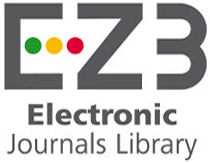Abstract
Background: Langerhans Cell Histiocytosis (LCH) has diverse manifestations, from asymptomatic to aggressive, which involves many organs. Histopathological examination playsa crucialrole as a basic diagnostic standard for LCH. Writing Group of the Histiocyte Society proposes a guideline for diagnosing LCH, divided into presumptive, designated, and definitive diagnosis.
Case Illustration: Two cases of a 14 month-old girl and an 18 month-old girl presented similar clinical manifestation and multi-organ involvement. Dermatological examination revealed red papules and plaques covered by brownish scales and crusts on the scalp and body, erosion in some folds of the body. Histopathological examination of the first case revealed an early purpuric phase. S100 immunostaining just revealed hyperplasia of Langerhans cell but still could not support the diagnosis of LCH. Fine Needle Aspiration Biopsy of the enlarged submandibular lymph node after two months ofobservation suggested LCH. In the second case, histopathological examination revealed proliferation of round-oval nucleated cells, pleomorphic, some reniform nuclei, with amphophilic cytoplasm. S100 and CD1a immunostaining revealed a positive reaction in the proliferative cells.
Discussion: Patients aged 14 and 18 monthsoldindicatedalmost similar clinical manifestations leading to LCH diagnosis, with different histopathological pictures. The first patient was presumptively diagnosedas high-risk multisystem LCH, but theinitial histopathology results did not support LCH diagnosis. On the other hand, the second patient was definitively diagnosed with high-risk multisystem LCH.
Conclusion: Patientswith clinically suspected LCH without histopathological confirmation should be observed at least six months to reassess the necessity of a follow-up biopsy.
Recommended Citation
Yuniaswan, Anggun Putri; Safitri, Putri Rachma; and Retnani, Diah Prabawati
(2021)
"Multisystem Langerhans Cell Histiocytosis in high-risk group: A case series of two infants,"
Journal of General - Procedural Dermatology & Venereology Indonesia: Vol. 5:
Iss.
2, Article 6.
DOI: 10.19100/jdvi.v5i2.205
Available at:
https://scholarhub.ui.ac.id/jdvi/vol5/iss2/6
Included in
Dermatology Commons, Integumentary System Commons, Skin and Connective Tissue Diseases Commons































